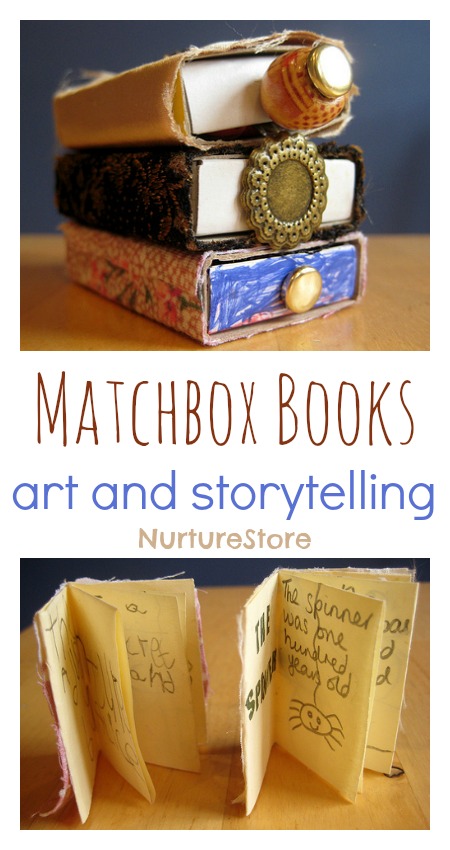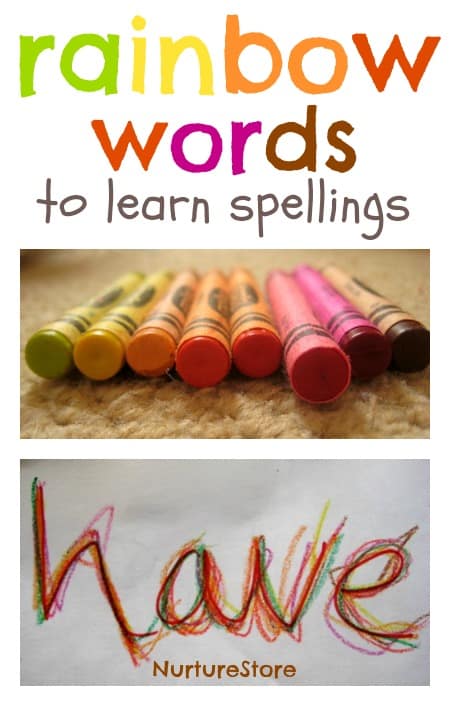Here’s a wonderful lesson that combines art and literacy, making little matchbox storybooks.

by Cathy James
Here’s a wonderful lesson that combines art and literacy, making little matchbox storybooks.

by Cathy James
Here’s another way to bring lots of sensory activities to our lessons: we’re using rainbow writing to learn spellings. 
by Cathy James
We love fall leaf crafts! Anything that combines a dash of the outdoors, a splash of colourful printing and a bit of playful learning is all good with us. We’re going to be using this autumn word tree for lots of different word games over the coming weeks – here’s how to make one.
by Cathy James
When I think back to the ways I learnt how to spell as a child, there was no fun or creative play involved. We got list of ten words every week, we copied them, we copied them, we copied them again, and then we had a test on a Friday to see how well we could remember them. We also had to put our hands up to show the whole class our scores, so if you hadn’t remembered that many it was pretty miserable.
But learning how to spell doesn’t have to be like that. Here are ten ways we learn spellings in our house – with lots of creativity and fun and jumping around involved.
There are lots of different ways that children learn and these spelling activities cover a range of preferred learning styles: visual/spacial, auditory, kinesthetic… If your child has a very strong learning preference trying out these ideas might help you discover a way that’s just right for them (it’s helped enormously in our house). In any case, all children can benefit from learning through a variety of ways, using all their senses, mixing things up a little so it doesn’t get boring, and maybe even enjoying learning how to spell.
The activities may take a few minutes longer to set up then just grabbing a pencil and paper but we’ve found they are a whole lot more fun – and effective – than just copying out the words.
by Cathy James
How many planets are there? Why does mummy like peas but I don’t? Why is fire sometimes blue? Why can’t we breathe in space?
Children ask so many interesting questions – thirsty for knowledge and full of wondering. Often though, we don’t get the chance to answer their questions: if we’re in the middle of an activity, about to head out somewhere, or because we simply don’t know the answer ourselves. It is such a shame to lose those questions, ignore that interest and possibly switch of children’s curiosity. So, here’s our solution: make a Wonder Wall!
by Cathy James
Welcome to our online tween book club! If you have children aged 8-ish to 12-ish, join us and read along with our book choices each month.
Here you’ll find ideas for how to set up a book club for children, and a tween reading list. I have a year of suggestions for great books for a children’s book club and I’ll be sharing discussion prompts and additional resources each month, so sign-up for updates in the box below.

